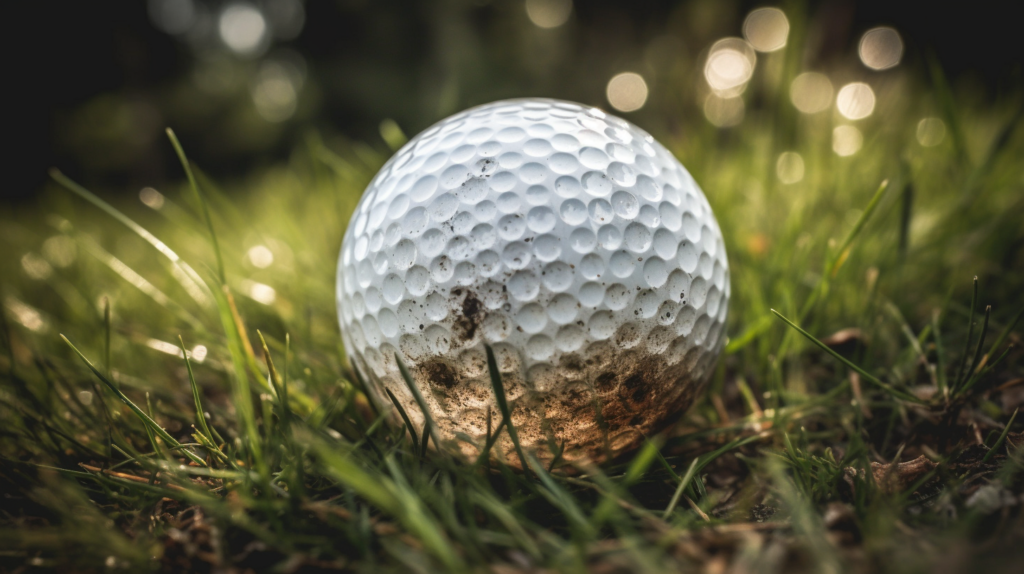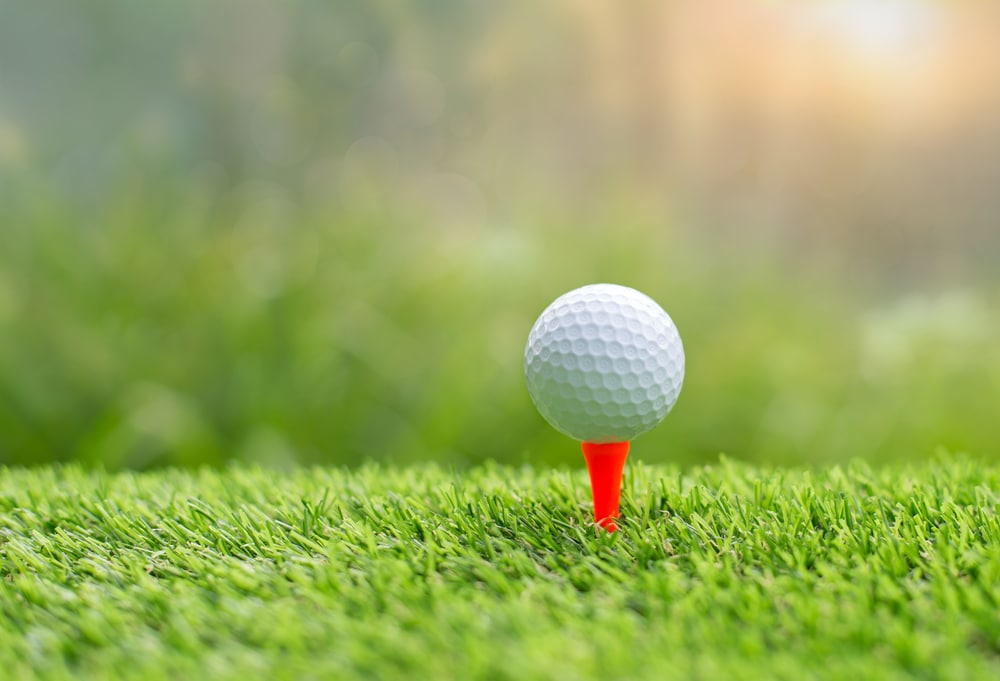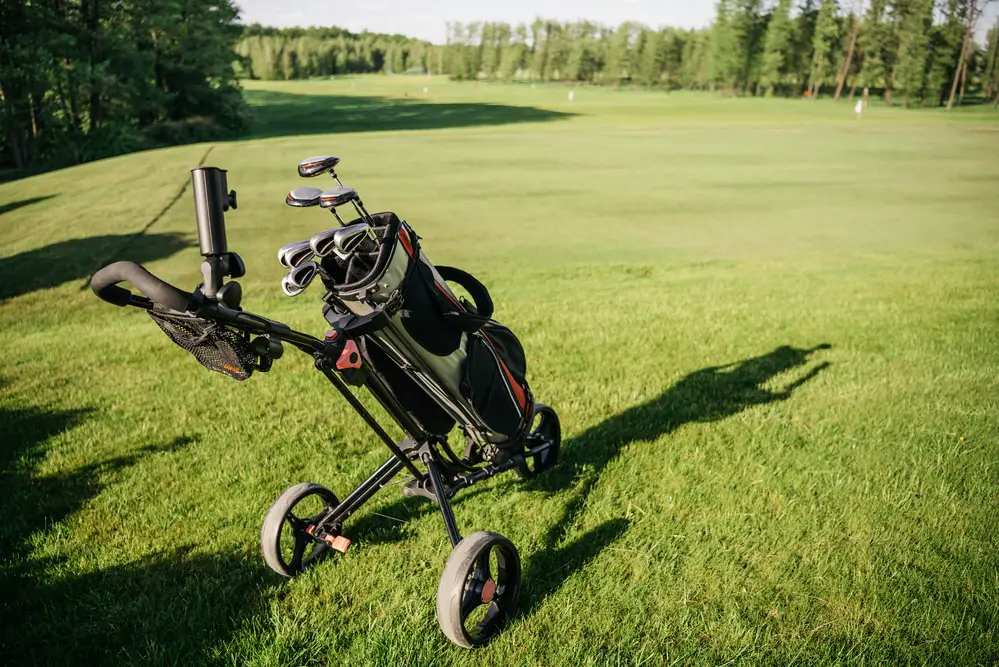Last Updated on November 6, 2023
Golf is a game of precision, so it’s no surprise that the right golf ball can make or break your performance. But with so many options available on the market today, how do you know which one to choose? What should you consider when selecting a golf ball for your game? The answer lies in asking yourself, “what golf ball should I use?” It’s an important question and one that requires careful thought if you want to get the most out of your round. We’ll look at different types of balls, what factors go into choosing them and their pros and cons – all designed to help you pick just the right one for your needs.
Table of Contents:
- Types of Golf Balls
- Choosing the Right Ball for Your Game
- Pros and Cons of Different Types of Golf Balls
- Tips for Choosing the Right Ball for You
- FAQs in Relation to What Golf Ball Should I Use
- Conclusion
Types of Golf Balls
Golfers have a wide variety of golf balls to choose from, each with its own unique characteristics and benefits. Two-piece golf balls are the most basic type of ball available and are typically made up of a hard rubber core surrounded by an outer cover. They offer good distance off the tee but don’t provide much spin or control around the green. Three-piece golf balls feature two layers in addition to the core, usually consisting of a softer inner layer that helps generate more spin on approach shots and short game shots. Four-piece golf balls take this one step further by adding an additional layer between the inner and outer layers for even more spin control around the greens.
Choosing the Right Ball for Your Game
With so many different types and brands on the market, it can be difficult to know which one is best suited for you. The key is to find a ball that matches your skill level and playing style.
Beginners
For those just starting out, two-piece balls are typically recommended as they provide more distance off the tee due to their larger cores and firmer covers. They also tend to have less spin than other models, making them easier to control in flight. Beginners should look for balls with lower compression ratings (typically below 70), as these will offer more forgiveness on off-centre hits.
Intermediate Players
As players become more experienced, three-piece balls may be better suited for their needs. These models usually feature softer covers that generate higher spin rates around the green while still providing plenty of distance off the tee box, thanks to their large cores and low compression ratings (usually between 70-90). Intermediate players should also consider choosing a ball with an intermediate layer or mantle designed specifically for mid-handicappers looking for added control without sacrificing too much power or feel around the greens.
Advanced Players
Advanced players who want maximum performance from their golf ball should look into four-piece designs featuring urethane covers and high compression ratings (over 90). These models offer a superior feel when striking shots from all distances while generating maximum spin rates around the green – perfect for those seeking ultimate control over every shot they hit. Advanced players should also consider investing in tour-quality golf balls such as Titleist Pro V1s or Callaway Chrome Softs if they’re willing to pay extra money for premium performance benefits like increased accuracy and longer carry distances off each clubface strike.
Pros and Cons of Different Types of Golf Balls

Two-Piece Golf Balls
Two-piece golf balls are the most basic type of ball available. They have a solid core and an outer cover made from either Surlyn or urethane. These balls offer good distance but don’t spin much, making them ideal for beginners who need help getting the ball airborne. The main downside to two-piece golf balls is that they tend to be less durable than other types of golf balls, so you may find yourself replacing them more often if you play frequently.
Three-Piece Golf Balls
Three-piece golf balls are designed with a larger core and multiple layers of cover material, usually Surlyn or urethane. This construction gives three-piece golf balls increased spin rates compared to two-piece models, which makes them great for intermediate players looking to add some extra control around the greens. However, these higher-spinning shots can also lead to more hooks and slices if your swing isn’t quite up to par yet.
Four-Piece Golf Balls
Four-piece golf balls are typically used by advanced players due to their combination of distance and spin rate capabilities. The four pieces consist of a large inner core surrounded by multiple layers of softer materials like rubber or resin, which helps create maximum energy transfer on impact while still providing plenty of backspin when needed around the green. These high-performance characteristics come at a cost, as four-piece models tend to be significantly pricier than two or three-piece options.
Tips for Choosing the Right Ball for You

With so many different types and brands available, it’s important to know what factors you should consider when selecting the best one for you. Here are some tips on how to choose the right golf ball for your game.
Consider Your Swing Speed and Spin Rate
The spin rate of a golf ball is determined by its construction, core size, cover material, dimple pattern and other features. It’s important to match these characteristics with your swing speed in order to get maximum performance from your chosen ball. Beginner players typically have slower swing speeds than more experienced players, so they may want to look at two-piece balls that offer more distance off the tee but less control around the green. Intermediate players should look at three-piece balls, which provide better feel and spin rates, while advanced players might opt for four-piece balls, which offer maximum control around the greens as well as increased accuracy off the tee box.
Test Out Different Brands and Models
Before making a purchase, it’s always wise to test out different brands and models of golf balls in order to find one that suits your needs best. Many retailers will allow customers to try out several different types before buying them, so take advantage of this opportunity if possible. You can also read reviews online or ask friends who play regularly what type of ball they prefer using in their own games – this can help narrow down your choices even further.
When choosing a new golf ball, it is also important to consider both durability and price. Two-piece balls tend not to last very long due to their softer covers, whereas three-and four-piece models usually have thicker covers which increase their lifespan significantly; however, they do come with higher price tags as well. Ultimately, you need something that will perform consistently throughout its lifespan without breaking the bank, so make sure you factor all these things into consideration when making a decision on which model is best suited for you.
Frequently Asked Questions
What is a good golf ball for an average player?
The key is to find a ball that offers the perfect balance of distance, spin and feel. A good option would be the Titleist Pro V1 or Pro V1x, which are designed with multi-layer construction and provide maximum performance in all areas. They also feature improved durability and softness, making them ideal for players who want to get more out of their game without sacrificing control or accuracy. Ultimately, it’s important to choose a golf ball that fits your skill level so you can maximise your potential on the course.
What golf ball should I use for my swing speed?
Choosing the right golf ball for your swing speed is essential to getting the most out of your game. Generally, if you have a slower swing speed (below 90 mph), then a softer compression golf ball will be best as it compresses more on impact and provides greater spin control. If you have a faster swing speed (above 100 mph), then a firmer compression golf ball will provide a better distance off the tee due to its higher launch angle and lower spin rate. Ultimately, choosing the right golf ball depends on personal preference, so it’s important to experiment with different types until you find one that works best for your particular swing style.
What is the easiest golf ball to hit straight?
Golf balls come in a variety of shapes, sizes and materials. The easiest golf ball to hit straight is the two-piece construction golf ball. This type of golf ball has a large core surrounded by a thin outer layer that helps reduce spin and increase accuracy. The larger core also provides more distance off the tee while still providing excellent control on approach shots. Additionally, these balls are typically cheaper than other types of golf balls, making them an ideal choice for beginners or those looking to save money without sacrificing performance.
Conclusion
With so many different types of balls available, it’s important to take into account factors such as spin rate, distance and feel when deciding which one is best for you. Ultimately, the answer to “what golf ball should I use?” depends on your individual playing style and preferences. Consider all of these factors before making your decision – that way, you’ll be sure to find the perfect fit.



